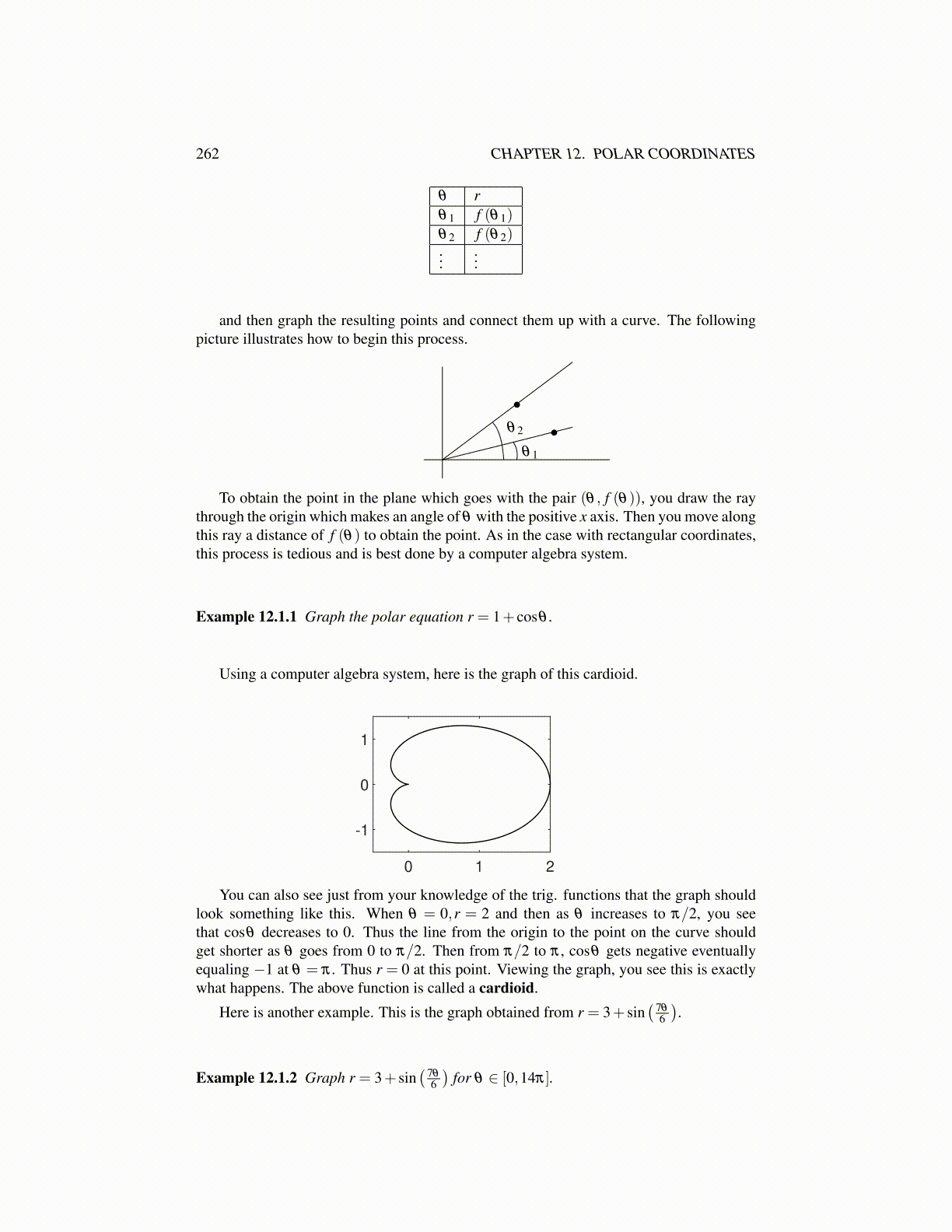
262 CHAPTER 12. POLAR COORDINATES
θ rθ 1 f (θ 1)θ 2 f (θ 2)...
...
and then graph the resulting points and connect them up with a curve. The followingpicture illustrates how to begin this process.
θ 1
θ 2 •
•
To obtain the point in the plane which goes with the pair (θ , f (θ)), you draw the raythrough the origin which makes an angle of θ with the positive x axis. Then you move alongthis ray a distance of f (θ) to obtain the point. As in the case with rectangular coordinates,this process is tedious and is best done by a computer algebra system.
Example 12.1.1 Graph the polar equation r = 1+ cosθ .
Using a computer algebra system, here is the graph of this cardioid.
0 1 2
-1
0
1
You can also see just from your knowledge of the trig. functions that the graph shouldlook something like this. When θ = 0,r = 2 and then as θ increases to π/2, you seethat cosθ decreases to 0. Thus the line from the origin to the point on the curve shouldget shorter as θ goes from 0 to π/2. Then from π/2 to π , cosθ gets negative eventuallyequaling −1 at θ = π . Thus r = 0 at this point. Viewing the graph, you see this is exactlywhat happens. The above function is called a cardioid.
Here is another example. This is the graph obtained from r = 3+ sin( 7θ
6
).
Example 12.1.2 Graph r = 3+ sin( 7θ
6
)for θ ∈ [0,14π].